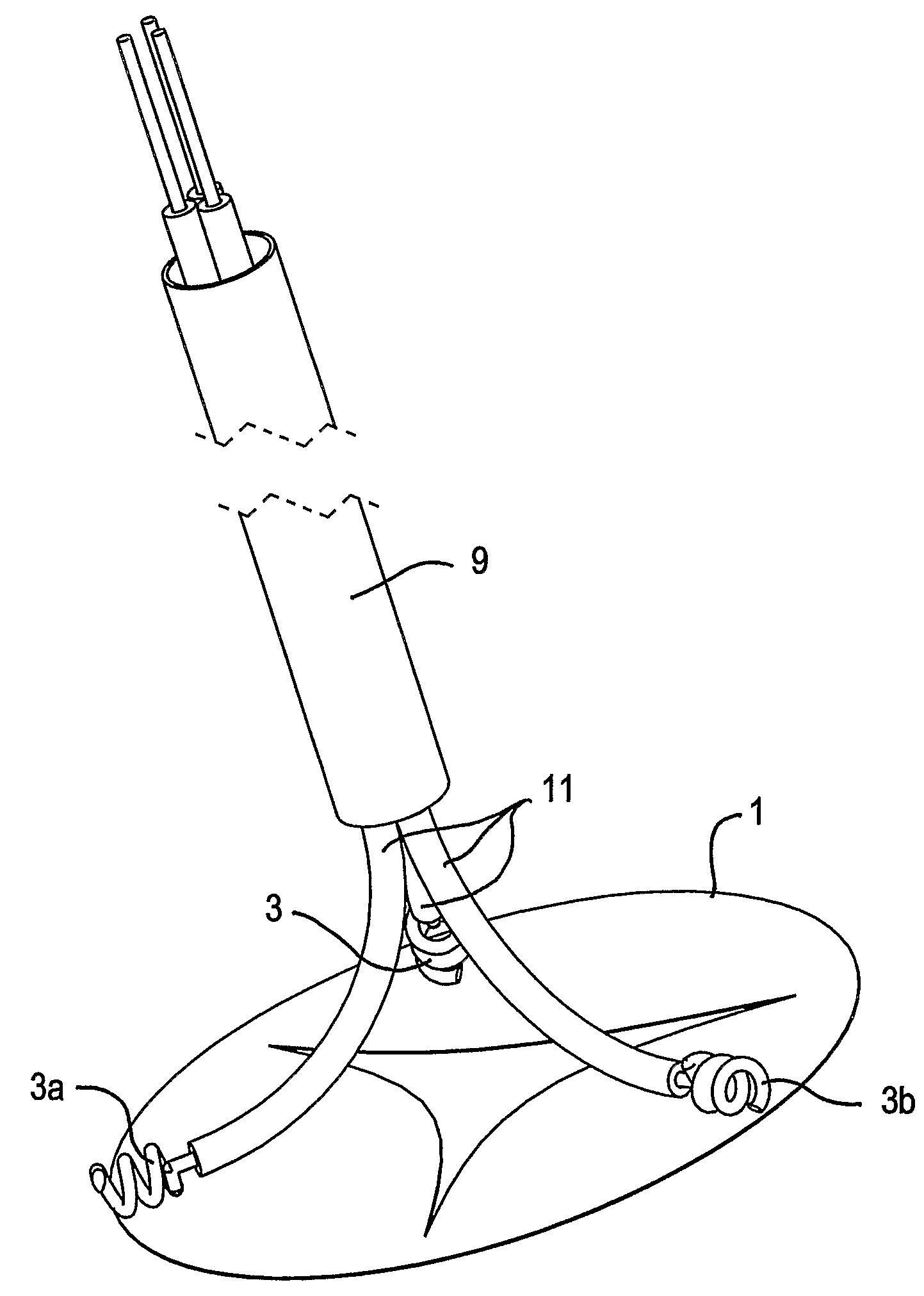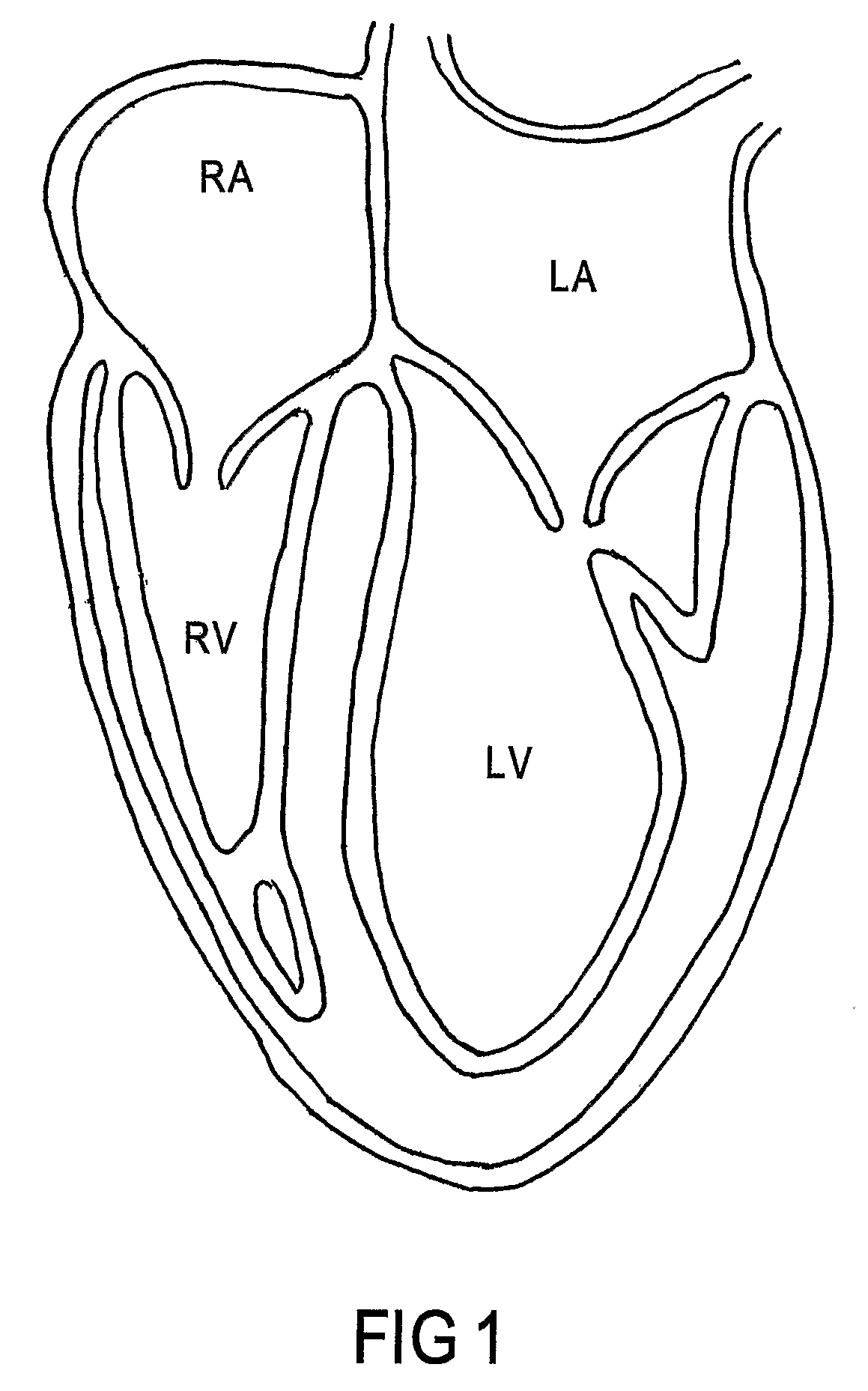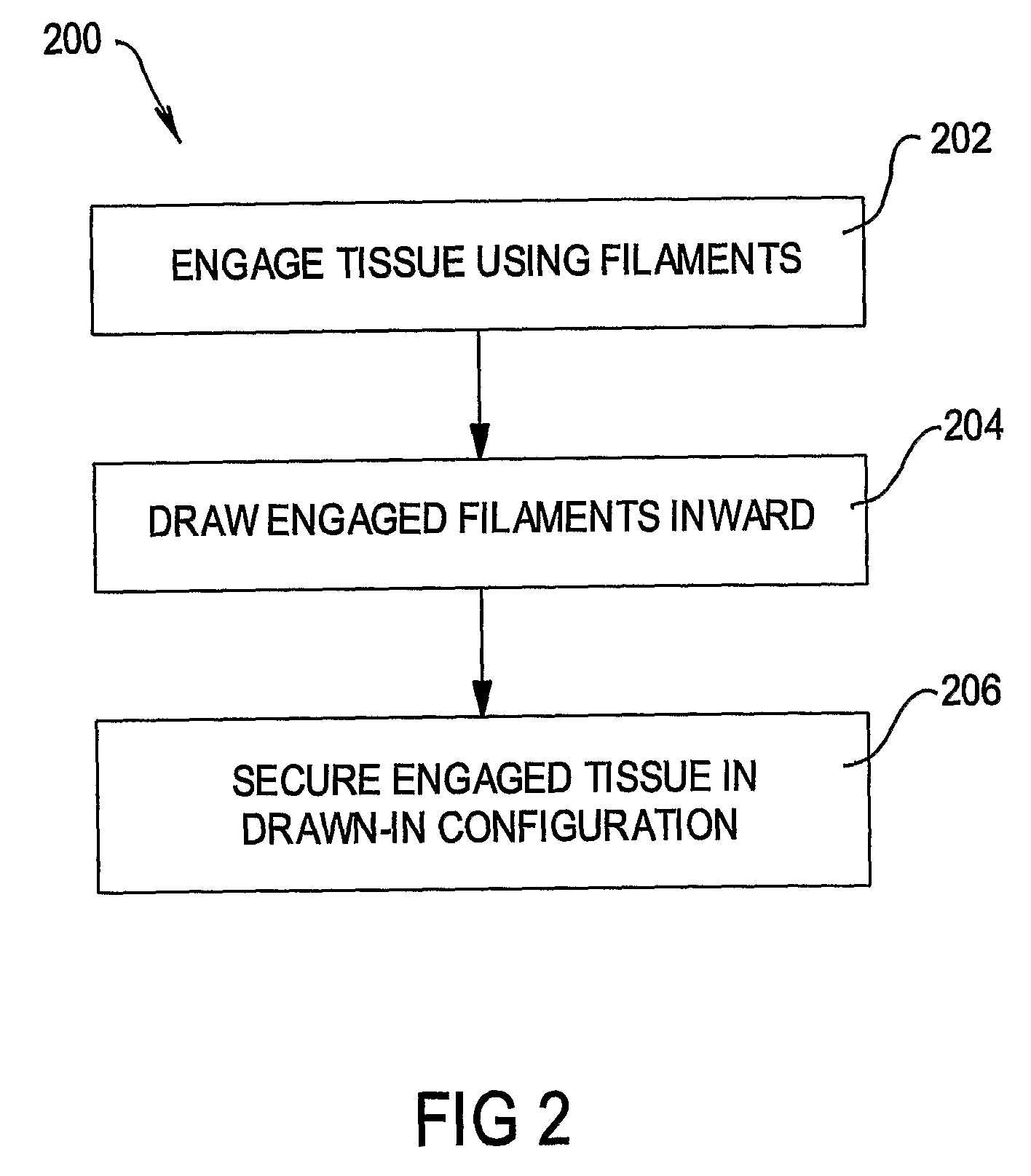Treating Valvular Insufficiency
a technology for valvular insufficiency and valvular valve, which is applied in the field of valvular insufficiency treatment methods and equipment, can solve the problems of deficiency or failure of valves in the circulatory system such as the tricuspid and mitral heart valves, valve failure, and dilation of the valve annulus, so as to improve the function of the valve, reduce the annulus, and improve the valve function
- Summary
- Abstract
- Description
- Claims
- Application Information
AI Technical Summary
Benefits of technology
Problems solved by technology
Method used
Image
Examples
Embodiment Construction
[0026]Referring firstly to FIG. 2, there is shown a method, generally referred to at 200, for treating valvular insufficiency. In a first step 202, a plurality of filaments is used to engage tissue at spaced apart locations of an annulus of the valve being treated. In a second step 204, the engaged filaments are drawn inward so as to draw the engaged tissue around the valve annulus inward. The engaged filaments are then secured with the engaged tissue in the drawn-in configuration in a third step 206 thereby reducing the effective diameter of the annulus of the valve.
[0027]Referring now to FIGS. 3A and 3B, there is shown a valve constriction device 300 for treating valvular insufficiency according to an embodiment of the invention. A plurality of filaments 2 each have an engaging portion 3 for engaging annular tissue 1 of the valve being treated. A collar 6 facilitates a drawn in configuration of filaments 2 by relative movement between the filaments and the collar. The valve annulu...
PUM
 Login to View More
Login to View More Abstract
Description
Claims
Application Information
 Login to View More
Login to View More - R&D
- Intellectual Property
- Life Sciences
- Materials
- Tech Scout
- Unparalleled Data Quality
- Higher Quality Content
- 60% Fewer Hallucinations
Browse by: Latest US Patents, China's latest patents, Technical Efficacy Thesaurus, Application Domain, Technology Topic, Popular Technical Reports.
© 2025 PatSnap. All rights reserved.Legal|Privacy policy|Modern Slavery Act Transparency Statement|Sitemap|About US| Contact US: help@patsnap.com



